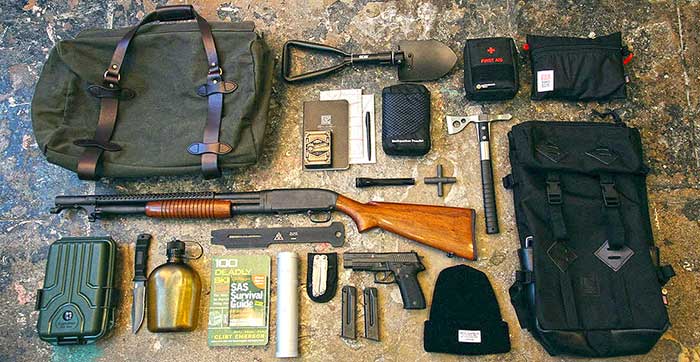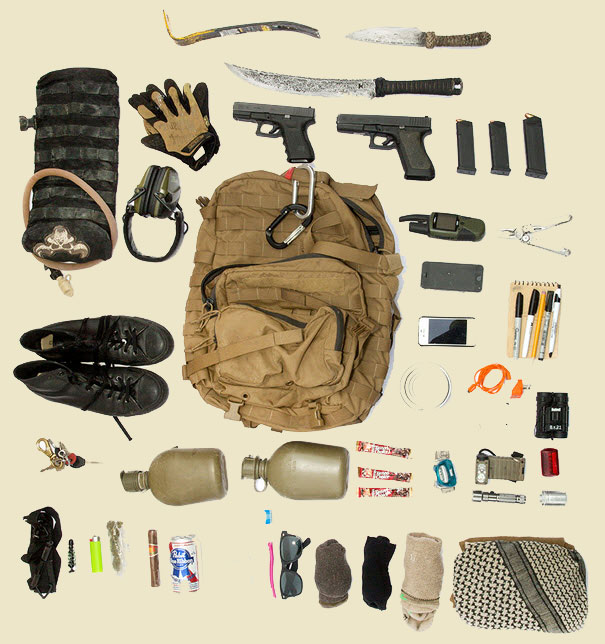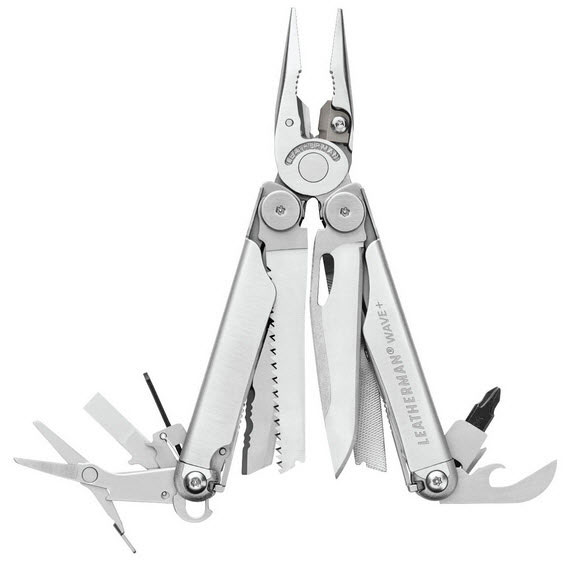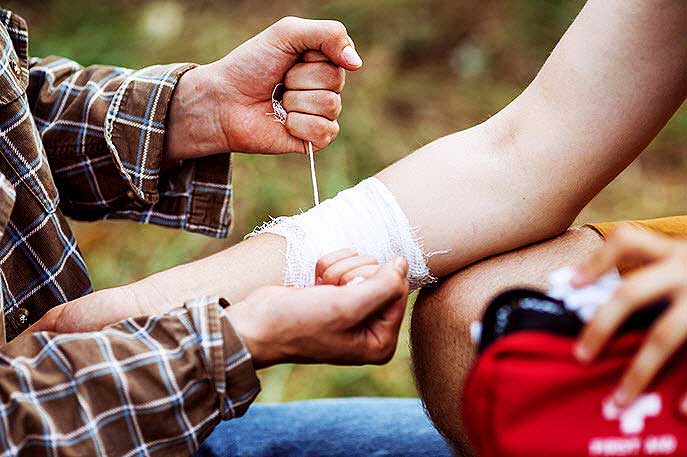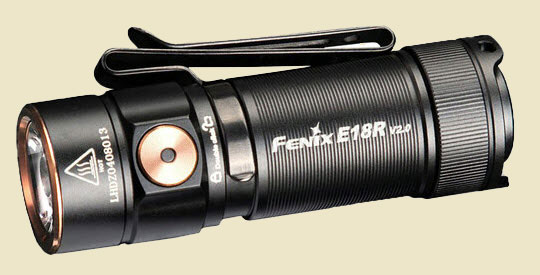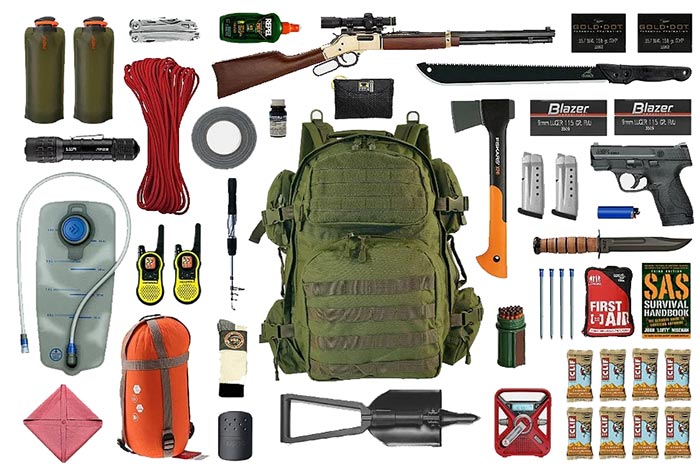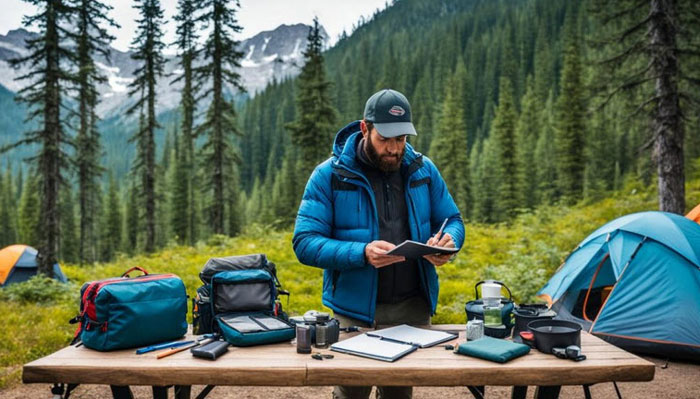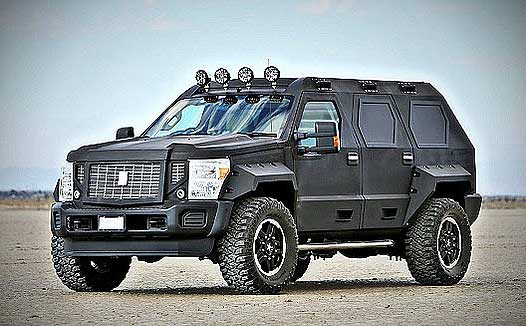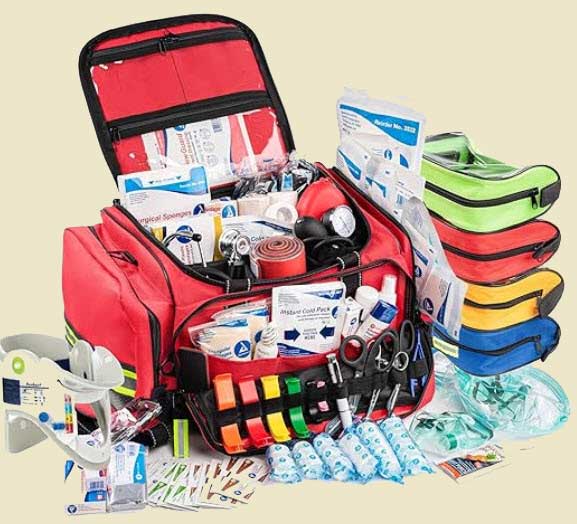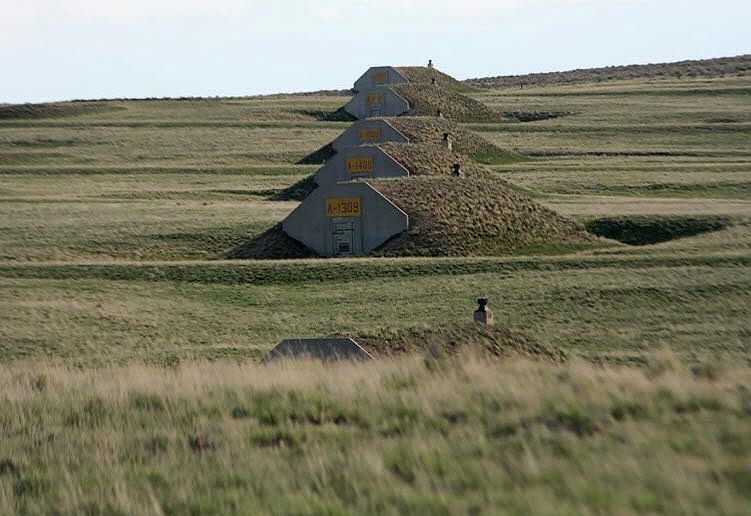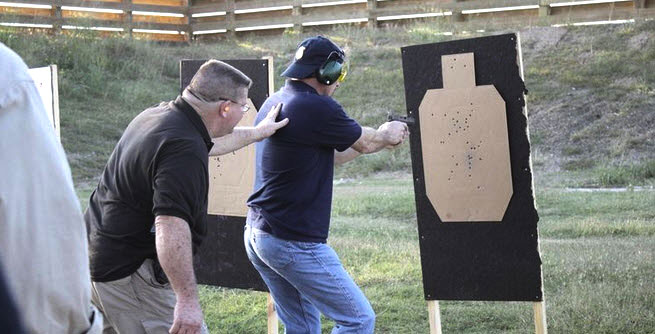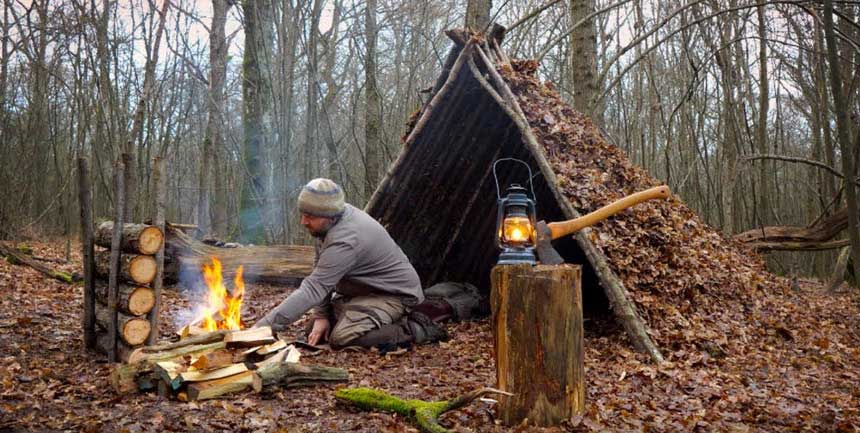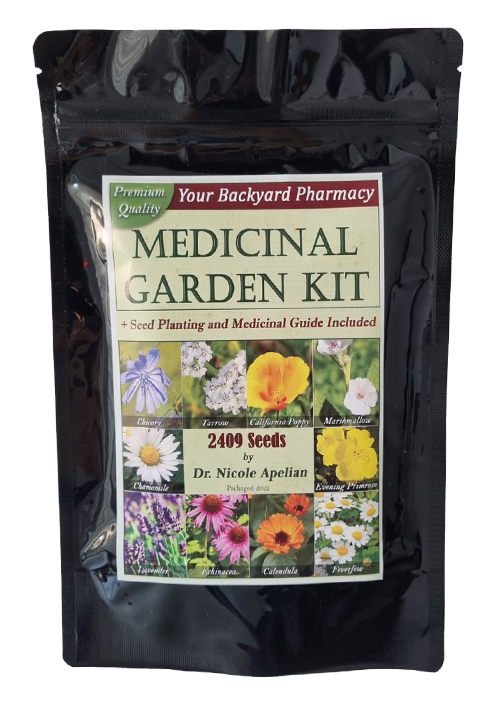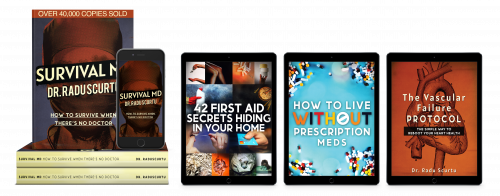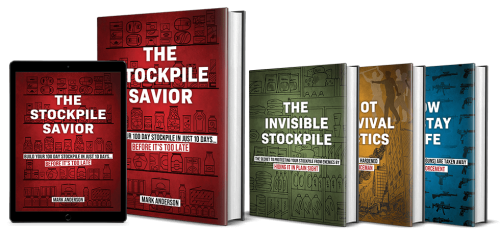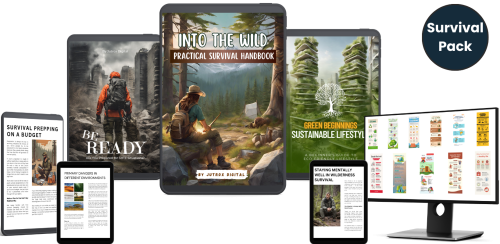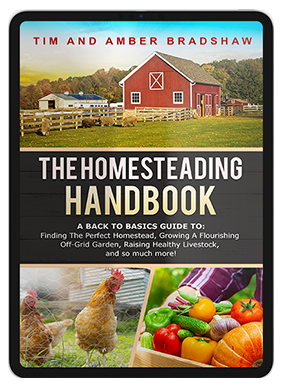- Home
- Gear
Survival Gear
Introduction to Survival Gear
Survival gear is an essential part of any emergency preparedness plan. Whether you're an outdoor enthusiast, a survivalist, or simply someone who wants to be prepared for the unexpected, understanding the importance of survival gear and how to effectively utilize it can be a lifesaver.
The concept of the "7 Steps of Survival Gear" is a comprehensive approach to ensure that you're equipped to face a wide range of scenarios.
1. The Importance of Being Prepared:
In a world where natural disasters, civil unrest, and unforeseen emergencies are realities, being prepared is more than a precaution—it's a necessity.
Survival gear is not just about having the tools; it's about being equipped with the knowledge and skills to use them effectively in various situations. Preparation can mean the difference between life and death, comfort and hardship.
2. Introduction to Survival Gear:
Survival gear encompasses a range of items designed to aid in survival in the wilderness, during disasters, or in any unpredictable situation.
This gear can include basic tools like knives and fire starters, to more complex items like water purification systems and emergency shelters. The right gear can help you navigate, create shelter, procure food and water, and maintain safety.
3.
The 7 Steps of Survival Gear Concept:
This concept organizes survival gear into seven distinct steps, each designed to address different aspects of survival and preparedness:
- Step 1: Everyday Carry (EDC): Items you carry on your person daily, like a multi-tool or a flashlight.
- Step 2: External Carry Bag: A small bag for immediate emergencies beyond your EDC.
- Step 3: Bug Out Bag (BOB): A comprehensive kit for longer-term survival needs.
- Step 4: Bug Out Vehicle (BOV): A vehicle prepared with essential gear for evacuation.
- Step 5: Home or Survival Retreat: Preparations at home for long-term survival.
- Step 6: The Community: Leveraging community resources and skills.
- Step 7: Personal Protection Gear: Items for self-defense and safety.
Each step is crucial in its own right, offering a structured approach to building a complete survival gear arsenal.
This tiered strategy ensures you are prepared for emergencies at a personal, local, and wider community level.
By understanding and implementing the 7 Steps of Survival Gear, you can significantly increase your readiness for any situation.
Step #1 of Survival Gear
In the realm of survival and preparedness, the concept of Everyday Carry (EDC) plays a crucial role.
EDC refers to the essential items that are carried on a daily basis to assist in dealing with normal everyday needs, as well as possible emergency situations.
Understanding the importance and composition of a practical EDC kit is vital for anyone seeking to be prepared for the unexpected.
1. Essentials for Daily Preparedness:
EDC items are those that you find indispensable in your day-to-day life and in potential crisis scenarios. They are the tools that keep you prepared for both routine tasks and unforeseen challenges.
The key is to strike a balance between being prepared and keeping your kit lightweight and manageable.
2. Examples of EDC Items:
A well-thought-out EDC kit typically includes a few core items:
- Multi-tool: An all-in-one tool that combines several functions in one. Ideal for handling a variety of tasks without needing a full toolbox.
- Flashlight: Essential for power outages, night-time navigation, or low-light situations. A compact, high-lumen flashlight is preferable.
- Pocket Knife: Incredibly versatile, a good knife can be used for everything from opening packages to emergency situations.
3. Tips for Selecting EDC Items:
When choosing your EDC essentials, consider the following:
- Functionality vs. Necessity: Choose items that serve multiple purposes but avoid overburdening your pockets or bag with unnecessary gadgets.
- Quality Over Quantity: Invest in high-quality items that will withstand regular use and last longer.
- Personalization: Tailor your EDC to your lifestyle, environment, and needs. What is essential for one person might be unnecessary for another.
- Legal Compliance: Ensure that all items, especially tools and knives, comply with local laws and regulations.
A well-curated EDC is a personal statement of preparedness. By selecting items that are practical, reliable, and suited to your individual needs, you set a foundation for readiness in everyday life and in unexpected situations.
Step #2 of Survival Gear
In the world of preparedness and survival, the concept of an External Carry Bag, often referred to as a SCRAM (Structured Critical Airway Management) Bag, is a cornerstone of immediate emergency response.
As the second step in the 7 Steps of Survival Gear, the SCRAM Bag is a crucial component for those who prioritize readiness for any situation.
1. Defining the SCRAM Bag:
Originally designed for medical emergencies, particularly airway management, the SCRAM bag has evolved into a broader concept in the survival community.
It's a compact, yet comprehensive emergency bag meant for situations that require a quick response.
Unlike a full-fledged bug out bag, the SCRAM bag is smaller and more focused on immediate, short-term needs.
2. What to Include for Immediate Emergencies:
A well-prepared SCRAM bag should include:
- Basic First Aid Supplies: Bandages, antiseptics, and basic medication.
- Emergency Tools: A multi-tool, flashlight, and a whistle for signaling.
- Personal Protection Equipment: Masks, gloves, and eye protection.
- Critical Documents: Copies of identification, maps, and emergency contacts.
- Nutrition and Hydration: Energy bars and a small water bottle or purification tools.
3. Considerations for Bag Choice and Portability:
Choosing the right SCRAM bag involves several considerations:
- Size and Weight: The bag should be light enough to carry comfortably but large enough to hold all essentials.
- Accessibility: Pockets and compartments should be easily accessible for quick retrieval of items.
- Durability: Materials should be robust to withstand various conditions and usage.
- Comfort: Straps and back panels should be designed for ergonomic support, especially if carried for extended periods.
- Discreetness: The bag’s appearance shouldn’t draw unnecessary attention, blending with everyday environments.
In essence, a SCRAM bag is your immediate go-to kit for unexpected situations. It bridges the gap between everyday carry items and a full bug out bag, ensuring you're prepared for emergencies that require a swift and decisive response.
Step #3 of Survival Gear
The Bug Out Bag (BOB), a vital element in any survival strategy, is your lifeline in emergencies. As Step #3 in the 7 Steps of Survival Gear program, it's essential to equip your BOB thoughtfully to ensure you're ready for any situation.
If you would like to read some interesting Q & A's about Bug Out Bags, you can click here...
1. Comprehensive List of BOB Essentials:
Your BOB should include necessities for at least 72 hours. Key items include:
- Water and Filtration System: Bottled water, purification tablets, and portable filters.
- Food Supplies: Non-perishable food like energy bars and dehydrated meals.
- Shelter and Warmth: Compact sleeping bag, tent, and emergency blankets.
- Clothing: Weather-appropriate and durable clothing, including a rain jacket.
- First Aid Kit: Comprehensive kit with bandages, antiseptics, and essential medications.
- Tools and Gear: Multi-tool, flashlight, fire-starting kit, and a sturdy knife.
- Communication and Navigation Tools: Maps, compass, and a battery-powered or hand-crank radio.
- Personal Documents: Identification, emergency contacts, and critical medical information.
2.
Balancing Weight and Necessity:
When assembling your BOB, balance is key:
- Lightweight Options: Choose lightweight, compact versions of essential items.
- Pack Smart: Distribute weight evenly and prioritize items based on necessity and frequency of use.
- Regular Review: Regularly evaluate and adjust your BOB’s contents to eliminate unnecessary items.
3. Noise Discipline and Camouflage:
Staying discreet can be critical:
- Noise Reduction: Secure items to prevent rattling and use quiet zippers and fasteners.
- Camouflage and Stealth: Choose a bag and gear in neutral or camouflage colors to blend into your environment.
- Tactical Movement: Learn how to move quietly and avoid drawing attention in potentially hostile scenarios.
A well-prepared BOB is more than a collection of items; it's a tailored response to potential crises, designed to sustain you and enhance your chances of survival in challenging situations.
Step #4 of Survival Gear
Step #4 of the 7 Steps of Survival Gear, focuses on the Bug Out Vehicle (BOV), a crucial element in your survival strategy. The BOV is not just a means of transportation; it's a mobile survival kit, a temporary shelter, and in some cases, a lifeline in crisis situations.
1. Choosing and Equipping a BOV:
Selecting the right BOV depends on various factors including terrain, climate, and personal needs. A good BOV should have:
- Reliability: Opt for a vehicle known for durability and easy maintenance.
- Off-road Capability: If your escape route includes rough terrain, consider a 4WD.
- Fuel Efficiency: A vehicle that consumes less fuel is advantageous in situations where fuel might be scarce.
- Cargo Space: Adequate space for essential gear and supplies.
- Discreet Appearance: A vehicle that blends in can be less of a target in chaotic situations.
Equip your BOV with:
- Basic Repair Tools: Spare tire, jack, jumper cables, and basic mechanical tools.
- Navigation Aids: Maps, compass, and GPS device.
- Communication Devices: Radio and a charged cell phone with extra batteries or solar chargers.
2. Storing Gear and Maintaining the Vehicle:
Your BOV should always be ready to go. This includes:
- Regular Maintenance: Keep the vehicle in top condition with regular check-ups.
- Organized Storage: Use storage bins and organizers for easy access to gear.
- Emergency Supplies: Store a mini version of your BOB, including water, non-perishable food, first aid kit, and blankets.
3. Everyday Items that Double as Survival Tools:
Several everyday items can be repurposed in survival scenarios:
- Seat Belt Cutter and Window Breaker: For quick escapes in emergencies.
- Fire Extinguisher: Can be used for both vehicle fires and general fire emergencies.
- Car Fluids: Useful for various purposes, from starting fires to lubricating tools.
The BOV is your gateway to safety in emergencies. It’s not just about getting from point A to point B; it’s about doing so efficiently, safely, and with all the necessary resources at your disposal.
Step #5 of Survival Gear
Step #5 in the 7 Steps of Survival Gear focuses on preparing your home or survival retreat for long-term sustainability and safety. This step is crucial as it's where you may spend an extended period during a major crisis or disaster.
1. Long-term Stockpiling (Food, Water, Medical Supplies):
Adequate stockpiling is the backbone of any home survival plan. Essential components include:
- Food: Store a variety of non-perishable food items, such as canned goods, dried fruits, grains, and protein bars. Aim for a supply that can last several months to a year.
- Water: Have a substantial stock of bottled water and methods for water purification. Consider water storage solutions like barrels or a rainwater collection system.
- Medical Supplies: Assemble a comprehensive first aid kit, including prescription medications, over-the-counter drugs, bandages, antiseptics, and essential medical tools.
2. Power and Lighting Solutions:
Maintaining power is critical for safety and comfort:
- Generators: A backup generator can provide electricity during power outages.
- Solar Power: Solar panels and battery systems offer a renewable energy source.
- Lighting: Stockpile various lighting options, including LED lanterns, flashlights, and solar-powered lights. Consider motion-sensor lights for security.
3. Concealing Your Preparedness:
Being discreet with your preparations can prevent becoming a target:
- Cautious Sharing: Be selective about who knows the extent of your supplies and plans.
- Camouflaged Storage: Use inconspicuous storage solutions to blend your supplies into your home environment.
- Security Measures: Implement security systems and practices to protect your home and supplies without drawing attention.
Your home or survival retreat should be a secure, self-sufficient sanctuary in times of crisis. With careful planning and discreet execution, you can create a safe haven that ensures your and your family’s survival in uncertain times.
Step #6 of Survival Gear
In the intricate tapestry of survival strategies, Step 6: The Community stands out as a fundamental aspect. This step is about leveraging the power of collective effort and wisdom for survival and resilience in challenging times.
1. Building a Network of Skilled Individuals:
Survival is not a solitary endeavor. It requires the strength of a community, each member bringing unique skills and knowledge to the table. Building a network involves:
- Identifying Key Skills: Recognize the essential skills needed in a crisis, such as medical expertise, mechanical know-how, and tactical abilities.
- Fostering Relationships: Establish strong connections with neighbors, local groups, and like-minded individuals.
- Regular Meetups and Training: Organize community meetings to share knowledge and coordinate survival strategies.
2. Sharing Resources and Skills:
The essence of a survival community is the shared pool of resources and skills. This includes:
- Skill-Sharing Workshops: Conduct training sessions where community members teach others their expertise.
- Resource Inventory: Maintain a communal inventory of essential supplies and equipment.
- Collective Purchasing: Pool resources to acquire bulk supplies and distribute them equitably.
3. Coordinating Efforts for Collective Survival:
Survival is enhanced when efforts are synchronized. This involves:
- Developing a Response Plan: Create a comprehensive plan for different scenarios (natural disasters, societal breakdowns).
- Communication Systems: Establish reliable communication channels for coordination during emergencies.
- Community Drills: Regularly practice evacuation and emergency response drills.
Step #6 advocates for the power of unity and preparedness in ensuring survival. By building a network of skilled individuals, sharing resources and skills, and coordinating efforts, communities can create a formidable force capable of withstanding and thriving in the face of adversities.
Step #7 of Survival Gear
Step #7 of the 7 Steps of Survival Gear delves into the critical realm of Personal Protection Gear. In a survival scenario, ensuring your safety and the defense of your resources is paramount.
This step encompasses the selection of appropriate defensive tools, understanding ammunition needs, and acknowledging the importance of training and legal considerations.
1.
Selection of Defensive Tools and Weapons:
The choice of personal defense gear is a highly individual decision, influenced by the environment, personal skills, and the nature of potential threats. Considerations include:
- Handguns and Rifles: For home defense and hunting. Select based on reliability, ease of use, and comfort.
- Non-lethal Weapons: Pepper spray, stun guns, and tactical flashlights can be effective for personal defense without lethal force.
- Bladed Weapons: Knives and machetes serve dual purposes, both as tools and for defense.
2. Ammunition Standardization and Spare Parts:
Efficient use of firearms in survival situations involves more than just having a weapon:
- Ammunition Standardization: Standardizing on common calibers ensures easier resupply and interchangeability among your group.
- Spare Parts and Maintenance Kits: Stock up on essential spare parts for your firearms and learn basic maintenance to keep them functional.
3. Training and Legal Considerations:
Possessing personal protection gear requires responsibility:
- Regular Training: Engage in regular training to maintain proficiency in using your chosen defensive tools. This includes safety training, target practice, and tactical drills.
- Legal Considerations: Stay informed about the legal aspects of owning and using firearms and other defensive tools. Understand your local laws regarding self-defense and the carrying and use of weapons.
Step #7 is not just about acquiring weapons; it's about the thoughtful selection, responsible use, and the continuous development of skills to use these tools effectively and legally for personal protection.
Small vs. Large Survival Gear
Collections
In the world of survival preparation, the debate between small versus large gear collections is pivotal. Tailoring your survival gear to your specific needs and environment is not just a matter of preference but a strategic decision impacting your survival efficacy.
1. Tailoring Your Collection to Your Needs and Environment:
Every survival scenario is unique, influenced by variables like geography, climate, and personal skill set. A coastal dweller, for instance, would prioritize different gear than someone in a mountainous region.
Assess your environment, potential threats, and personal capabilities to determine the essentials. Include items specific to your region's climate, natural resources, and potential emergencies.
2. Minimalist Survival Gear for the Essentialist:
Adopting a minimalist approach involves focusing on the bare essentials. This strategy is ideal for those who value mobility and simplicity. Key components include:
- Multi-purpose Tools: Items like a Swiss Army knife or a multi-tool save space and serve various functions.
- Compact Shelter: A lightweight tent or hammock, combined with a weather-appropriate sleeping bag.
- Basic Survival Kit: Including items like a fire starter, water purification device, and a compact first aid kit. Minimalist gear is about having less but ensuring each item has maximum utility and reliability.
3. Comprehensive Collection for the Ultimate Prepper:
For those preparing for long-term survival scenarios, a comprehensive collection is advisable. This includes:
- Extensive Medical Supplies: Going beyond basic first aid to include prescription medications and advanced medical tools.
- Diverse Food and Water Storage: A wide range of non-perishable food items and extensive water storage solutions.
- Advanced Tools and Weapons: Including items for self-defense, hunting, and building.
- Communication and Navigation Gear: Radio systems, GPS devices, and physical maps. A larger collection requires more space and organization but offers a broader range of options to handle diverse challenges.
Whether you choose a minimalist approach or a comprehensive collection, the key is to ensure your survival gear aligns with your specific situation, needs, and survival strategy.
Innovative and Unique Gear
In the realm of survival, the balance between traditional methods and modern innovation is a fascinating topic. At "Secret-Survival-Strategies.com," we explore this balance by spotlighting both innovative gadgets and recommending time-tested tools.
1. Spotlight on Cutting-Edge Survival Gadgets and Tools:
The modern survivalist has an array of advanced tools at their disposal. These gadgets are designed to provide maximum utility with minimal effort and space. Key examples include:
- Solar Chargers: Portable solar panels to keep electronic devices charged.
- Water Purification Devices: Advanced, compact filters like LifeStraw or SteriPEN.
- Multi-Tools with Survival Features: Tools like the Leatherman Signal, which includes a firestarter and a whistle.
- Compact Drones for Surveillance: Drones can be used for scouting and gaining a tactical advantage in a survival scenario.
- Emergency Communication Devices: Devices like satellite phones or GPS messengers for locations where cell service is unreliable.
2. Traditional vs. Modern Survival Gear:
While modern gadgets offer convenience and efficiency, traditional gear brings reliability and simplicity. Understanding the advantages of each is crucial:
- Reliability of Traditional Gear: Tools like the fixed-blade knife, compass, and fire steel are less likely to fail and require no power source.
- Efficiency of Modern Gear: Modern gear often combines multiple functions into one device, saving space and weight.
- Skill Requirements: Traditional gear often requires more skill and practice to use effectively, whereas modern gear can be more user-friendly.
- Durability and Repairability: Traditional gear can sometimes be more durable and easier to repair in the field compared to high-tech gadgets.
Balancing traditional wisdom with modern advancements allows survivalists to prepare for a wide range of scenarios, ensuring they are equipped with tools that are as reliable as they are innovative.
Conclusions:
As we conclude our journey through the intricate and vital world of survival strategies at "Secret-Survival-Strategies.com," we must emphasize the core principle that underlies all our discussions: the importance of continuous learning and adaptation.
Survival is not a static skill set but a dynamic process of growth, learning, and personal development.
1. Emphasizing the Importance of Continuous Learning and Adaptation:
The landscape of survival is ever-changing, shaped by new challenges and evolving environments. To stay ahead, one must:
- Stay Informed: Keep abreast of the latest survival techniques, gear innovations, and environmental changes.
- Practice Regularly: Skills become refined only through practice. Regularly test your skills in different scenarios.
- Learn from Experience: Reflect on past experiences, both successes and failures, to deepen your understanding and improve your strategies.
2. Customize Their Survival Gear Strategy:
While we provide comprehensive guides and advice, the essence of survival lies in personalization. Every individual, environment, and situation is unique, and so should be your survival strategy. We encourage you to:
- Assess Personal Needs: Consider your specific environment, skill set, and the scenarios you are most likely to face.
- Tailor Your Gear: Choose gear that suits your individual needs, preferences, and capabilities.
- Be Flexible and Creative: Be open to adapting your gear and strategies as your situation and the environment evolve.
In conclusion, the path to becoming a proficient survivalist is ongoing and personal. It demands dedication, adaptability, and a willingness to learn and grow.
At "Secret-Survival-Strategies.com," we are committed to guiding you on this path, providing the knowledge and tools you need to navigate the unpredictable world of survival.
Remember, survival is not just about being prepared; it's about being adaptable, knowledgeable, and resourceful in the face of any challenge.
Be sure to click here to read our page about How to Fight Dirty and Win Fast!
